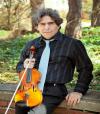What Does This MRI Report Of Lumbar Spine Indicate?

IMPRESSION
1. T11-T12 and L5-S1 moderate and L4-L5 mild degenerative disc disease.
2. T11-T12 diffuse posterior disc bulge and small central posterior focal disc herniation cause mild
central spinal canal stenosis.
3. L4-L5 diffuse posterior disc bulge and small right posterior focal disc herniation result in moderate
stenosis of the right lateral recess and mild stenosis of the central spinal canal and left lateral recess.
4. L5-S1 diffuse posterior disc bulge and small central posterior focal disc herniation result in mild
stenosis of the central spinal canal and bilateral lateral recesses.
5. L4-L5 mild bilateral and L5-S1 moderate right and mild /moderate left neural foraminal stenoses, due
to disc osteophyte complexes.
6. At L5-S1 level, there is a right L5 hemilaminectomy defect. No enhancing scar tissue is identified.
Arthritic changes in a previously surgerized spine
Detailed Answer:
Good morning. My name is Dr. Saghafi and I would like to summarize the findings of your MRI report of the lumbar spine. You have provided the impression of an MRI report which apparently was done WITH GADOLINIUM CONTRAST (injected XXXXXXX placed into the vein).
You've enclosed 2 images as attachments as well. One is referred to as a "sagittal" view of the lower thoracic, lumbar, and sacral spines (that's the long profile view of the back). The 2nd image is a 1 slice "axial" view at a level likely to be lower thoracic or upper lumbar regions since we see the presence of the spinal cord within the spinal canal itself.
You are a 37 year young woman on Flexeril and Neurontin. You have had previous surgery in the lumbar spine according to the report in the lumbar spine. You have not provided me any of your medical symptoms or history but I would imagine from the report and your images that you suffer from some type of lower back pain which may also be accompanied with radiating pain to one or both of your legs possibly with numbness and tingling as well.
I will now explain the meaning of each of the points of the report. In general, the report speaks of degenerative changes as a result of osteoarthritis which can usually be seen as a normal consequence of the aging process, following injury to the back (either acute or chronic), or due to surgeries and the healing process. So here we go:
1. T11-T12 and L5-S1 moderate and L4-L5 mild degenerative disc disease.
ANSWER: The levels of the spinal column designated as T11-T12 as well as L5-S1 the radiologist has noted "wear and tear" of a MODERATE nature which appears to be due to degeneration of the DISC which is sandwiched between the 2 spinal vertebral bodies. At the L4-L5 level the radiologist has noted MILDER changes of the DISC. Degenerative changes can be anything from dessication or dehydration of the disc itself to changing in the bony architecture which usually involves calcification or hardening of the ligaments as well as spurring of the joints where bony parts of one vertebral body meet another.
2. T11-T12 diffuse posterior disc bulge and small central posterior focal disc herniation cause mild central spinal canal stenosis.
ANSWER: At this level of T11-T12 there is a small DISC BULGE and also a small HERNIATION which is narrowing the spinal canal at this point. The material which is herniating is from the DISC itself at this level and it is causing there to be less space in the designated location.
3. L4-L5 diffuse posterior disc bulge and small right posterior focal disc herniation result in moderate stenosis of the right lateral recess and mild stenosis of the central spinal canal and left lateral recess.
ANSWER: At this level (L4-L5) there is also a small disc herniation of material and a disc bulge causing narrowing of the RIGHT LATERAL RECESS and a milder narrowing of the central spinal canal and left lateral recess. There is essentially a restriction of space where nerve fibers travel.
4. L5-S1 diffuse posterior disc bulge and small central posterior focal disc herniation result in mild stenosis of the central spinal canal and bilateral lateral recesses.
ANSWER: I'm sure you see the pattern here in these answers now as this point describes another BULGING disc and extrusion or herniation of disc material at the L5-S1 levels (junction of the lower lumbar spine and TAILBONE) causing again narrowing of the spinal canal where nerve fibers travel and are located.
5. L4-L5 mild bilateral and L5-S1 moderate right and mild /moderate left neural foraminal stenoses, due to disc osteophyte complexes.
ANSWER: At this level there are a couple of TIGHT AREAS called STENOSES caused by a bony calcification which is an overgrowth of bone referred to as an osteophyte complex (part of degenerative disc disease).
6. At L5-S1 level, there is a right L5 hemilaminectomy defect. No enhancing scar tissue is identified.
ANSWER: At this level you've had previous surgery which is well healed. No residual scar tissue is noted.
I hope this gives you a better idea of what the MRI report means and would appreciate your feedback and the CLOSING OF THE QUERY if you have no further questions to ask.
All the best to you.
Answered by

Get personalised answers from verified doctor in minutes across 80+ specialties



